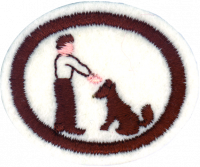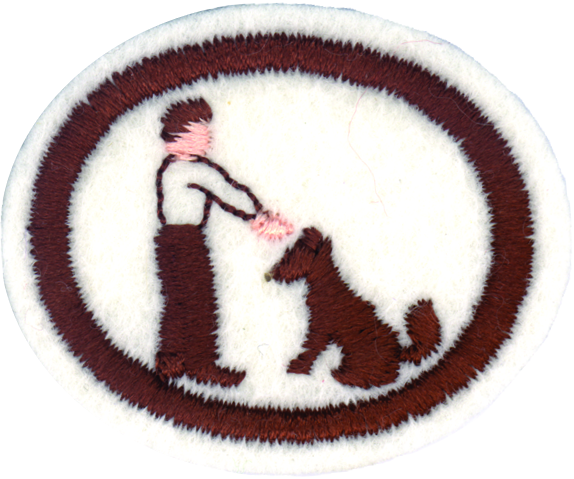Difference between revisions of "AY Honors/Dog Care and Training/Answer Key/es"
From Pathfinder Wiki
< AY Honors | Dog Care and TrainingAY Honors/Dog Care and Training/Answer Key/es
(Created page with "{{clear}}") |
|||
| (3 intermediate revisions by the same user not shown) | |||
| Line 23: | Line 23: | ||
{{clear}} | {{clear}} | ||
| − | |||
{{clear}} | {{clear}} | ||
| − | |||
<noinclude></noinclude> | <noinclude></noinclude> | ||
| Line 111: | Line 109: | ||
{{CloseReq}} <!-- 4 --> | {{CloseReq}} <!-- 4 --> | ||
{{ansreq|page={{#titleparts:{{PAGENAME}}|2|1}}|num=5}} | {{ansreq|page={{#titleparts:{{PAGENAME}}|2|1}}|num=5}} | ||
| − | <noinclude> | + | <noinclude></noinclude> |
| − | </noinclude> | + | <!-- 5. Asumir la plena responsabilidad de alimentar y dar de beber a un perro por dos o tres meses. --> |
| − | <!-- 5. | ||
| − | |||
| − | |||
| − | + | {{clear}} | |
| − | |||
| − | |||
| − | + | <noinclude></noinclude> | |
| − | <noinclude | ||
| − | |||
{{CloseReq}} <!-- 5 --> | {{CloseReq}} <!-- 5 --> | ||
{{ansreq|page={{#titleparts:{{PAGENAME}}|2|1}}|num=6}} | {{ansreq|page={{#titleparts:{{PAGENAME}}|2|1}}|num=6}} | ||
| − | <noinclude> | + | <noinclude></noinclude> |
| − | </noinclude> | + | <!-- 6. Capacitar a su perro hasta que pueda demostrar con éxito los siguientes:* --> |
| − | <!-- 6. | + | <noinclude></noinclude> |
| − | |||
| − | <noinclude | ||
| − | |||
{{ansreq|page={{#titleparts:{{PAGENAME}}|2|1}}|num=6a}} | {{ansreq|page={{#titleparts:{{PAGENAME}}|2|1}}|num=6a}} | ||
| − | <noinclude> | + | <noinclude></noinclude><noinclude></noinclude> |
| − | </noinclude> | ||
| − | |||
| − | <noinclude | ||
| − | |||
{{CloseReq}} <!-- 6a --> | {{CloseReq}} <!-- 6a --> | ||
{{ansreq|page={{#titleparts:{{PAGENAME}}|2|1}}|num=6b}} | {{ansreq|page={{#titleparts:{{PAGENAME}}|2|1}}|num=6b}} | ||
| − | <noinclude> | + | <noinclude></noinclude> |
| − | </noinclude | ||
| − | |||
| − | |||
| − | + | <noinclude></noinclude> | |
| − | <noinclude | ||
| − | |||
{{CloseReq}} <!-- 6b --> | {{CloseReq}} <!-- 6b --> | ||
{{ansreq|page={{#titleparts:{{PAGENAME}}|2|1}}|num=6c}} <!--T:40--> | {{ansreq|page={{#titleparts:{{PAGENAME}}|2|1}}|num=6c}} <!--T:40--> | ||
| − | <noinclude> | + | <noinclude></noinclude> |
| − | </noinclude | ||
| − | |||
| − | |||
| − | |||
| − | |||
| − | |||
| − | |||
| − | |||
| − | |||
| − | |||
| − | |||
| − | + | {{clear}} | |
| − | |||
| − | |||
| − | + | <noinclude></noinclude> | |
| − | <noinclude | ||
| − | |||
{{CloseReq}} <!-- 6c --> | {{CloseReq}} <!-- 6c --> | ||
{{ansreq|page={{#titleparts:{{PAGENAME}}|2|1}}|num=6d}} <!--T:42--> | {{ansreq|page={{#titleparts:{{PAGENAME}}|2|1}}|num=6d}} <!--T:42--> | ||
| − | <noinclude> | + | <noinclude></noinclude> |
| − | </noinclude | ||
| − | |||
| − | |||
| − | + | {{clear}} | |
| − | |||
| − | |||
| − | + | {{clear}} | |
| − | |||
| − | |||
| − | + | <noinclude></noinclude> | |
| − | <noinclude | ||
| − | |||
{{CloseReq}} <!-- 6d --> | {{CloseReq}} <!-- 6d --> | ||
{{ansreq|page={{#titleparts:{{PAGENAME}}|2|1}}|num=6e}} <!--T:45--> | {{ansreq|page={{#titleparts:{{PAGENAME}}|2|1}}|num=6e}} <!--T:45--> | ||
| − | <noinclude> | + | <noinclude></noinclude> |
| − | </noinclude | ||
| − | |||
| − | |||
| − | + | {{clear}} | |
| − | |||
| − | |||
| − | + | ====* Si es posible, los perros y los adiestradores deberán recibir instrucciones de un profesor calificado, preferiblemente en una clase. Un certificado de finalización de la formación en cualquier clase de obediencia para perros con una puntuación de calificación de 170 de un total de 200 puntos posibles se aceptará para esta especialidad.==== | |
| − | ====* | ||
| − | |||
| − | + | <noinclude></noinclude> | |
| − | <noinclude | ||
| − | |||
{{CloseReq}} <!-- 6e --> | {{CloseReq}} <!-- 6e --> | ||
{{CloseReq}} <!-- 6 --> | {{CloseReq}} <!-- 6 --> | ||
| − | <noinclude> | + | <noinclude></noinclude> |
| − | </noinclude> | + | ==Referencias== |
| − | == | + | <noinclude></noinclude> |
| − | |||
| − | <noinclude | ||
| − | |||
{{CloseHonorPage}} | {{CloseHonorPage}} | ||
Latest revision as of 00:07, 26 July 2022
Cuidar y adiestrar perros
Nivel de destreza
2
Año
1976
Version
15.05.2024
Autoridad de aprobación
Asociación General
1
Describir los pasos que se deben tomar en las siguientes áreas del cuidado de perros:
1a
Selección
1b
Registro
1c
Vacunación
2
Realizar por lo menos dos de las siguientes actividades:
2a
Describir lo que se puede hacer para eliminar pulgas, garrapatas y piojos de un perro.
2b
Mencionar algunas de las enfermedades, plagas y gusanos que los perros pueden contraer.
2c
Explicar lo que se debe hacer con una mordedura de perro.
3
Describir la forma de cómo enseñar a un cachorro a hacer sus necesidades biológicas en un lugar especialmente para él.
4
Explicar en detalle cómo bañar a un perro y el cuidado de su higiene en general.
5
Asumir la plena responsabilidad de alimentar y dar de beber a un perro por dos o tres meses.
6
Capacitar a su perro hasta que pueda demostrar con éxito los siguientes:*
6a
Al pie: el perro camina cerca de su lado izquierdo y se sienta cuando se detiene.
6b
Figura de 8: el perro se queda cerda de su lado sin oler a otras personas, hidrantes para incendio u otros perros.
6c
Pararse para un examen: el perro permite que personas extrañas lo toquen.
6d
Llamado: el perro viene cuando es llamado, se sienta justo delante de usted y se mueve a su izquierda cuando se le ordena.
6e
Estancia (sentarse y acostarse por un largo tiempo): el perro se queda sentado o acostado mientras usted atiende otros asuntos.
* Si es posible, los perros y los adiestradores deberán recibir instrucciones de un profesor calificado, preferiblemente en una clase. Un certificado de finalización de la formación en cualquier clase de obediencia para perros con una puntuación de calificación de 170 de un total de 200 puntos posibles se aceptará para esta especialidad.


